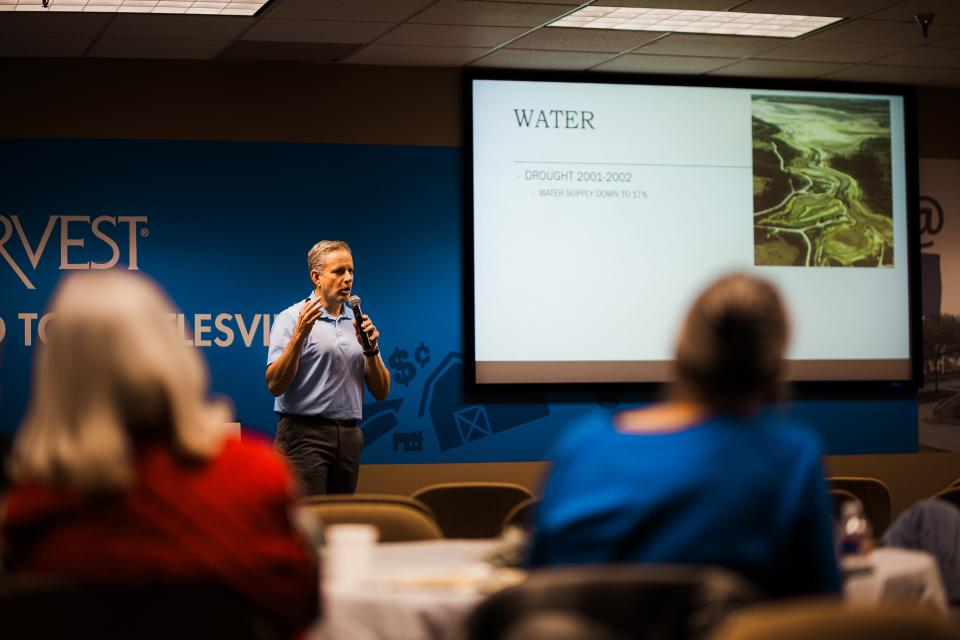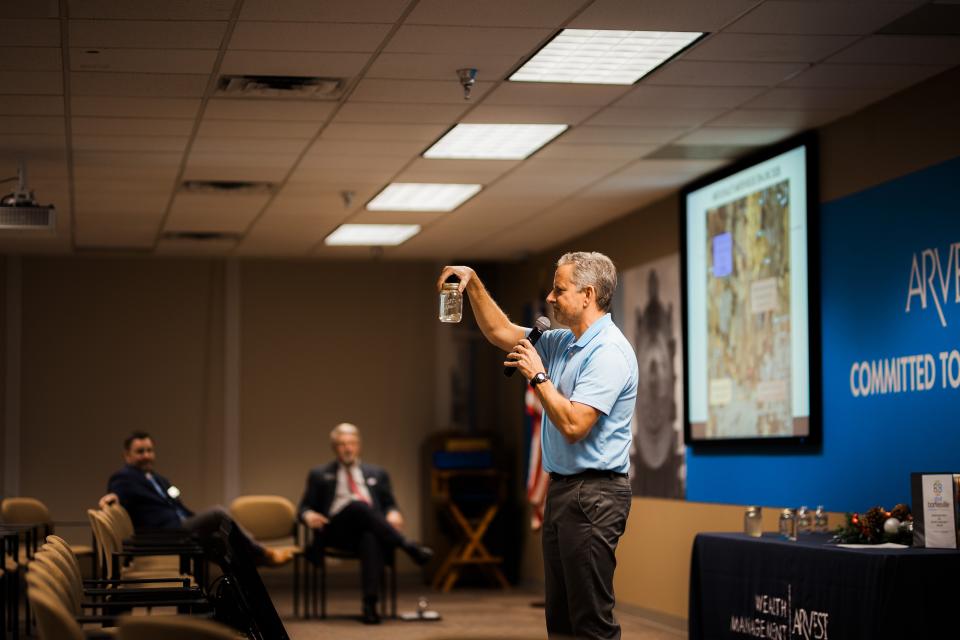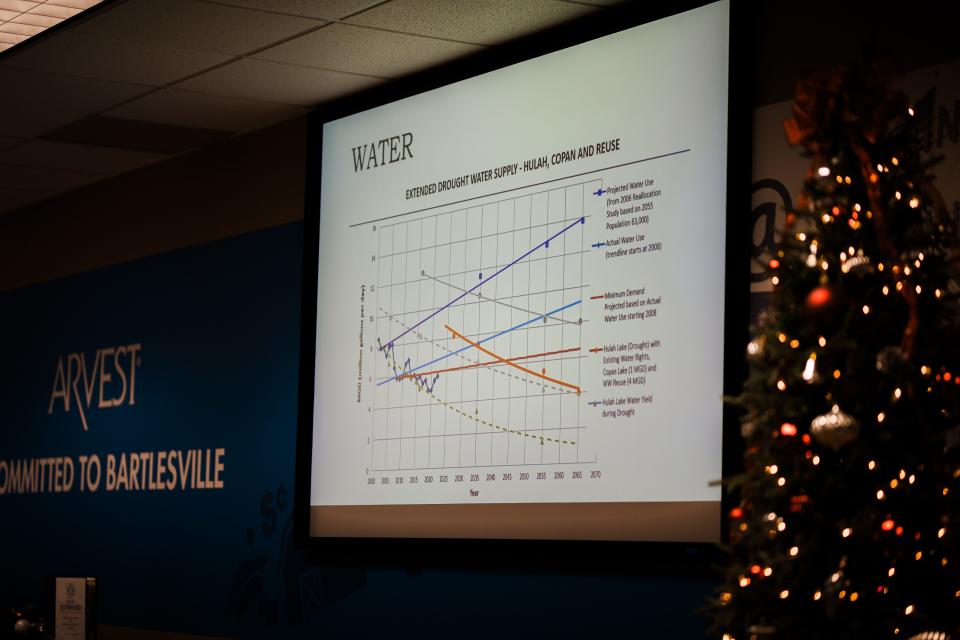City officials fire back against water critics in mayor's town hall on Thursday.
During Mayor Dale Copeland's town hall meeting Thursday, much of the time was dedicated to addressing citizens' concerns about where Bartlesville stands on its water supply.
Water Utilities Director Terry Lauritsen highlighted a series of strategic steps the city has taken over the past two decades to ensure a stable water supply, even in the face of severe droughts.

"We always get the question, you had this happen in 01/02, and it's happening again. Why didn't you do anything? What have you done in the last 20 years?" Lauritsen said. "We're going to talk about that."
Lauritsen explained the city faced a critical water shortage in 2001 due to a two-month drought. During that period, Huluah Lake, Bartlesville's largest water source, dwindled to a mere 20% of its capacity.
However, in the recent year-and-a-half-long drought, one of the two worst on record, overall water supply levels never fell below 50%.
Key to this success has been a series of proactive measures taken over the last two decades.
The city reversed its water rate structures. Previously, water was cheaper the more it was used, but now the cost increases with higher usage, encouraging conservation.
"So the more water you use, the more expensive it gets because that produces more demand on your system, more reserves that you have to use," Lauritsen said.
In 2006, a new water treatment plant was built, raising rates to finance the construction.
"Those two things that drove down the use of water," Lauritsen said. "When your rates are more expensive, people are using water a little more prudently."
Another significant achievement was the purchase of water rights from Copan Lake in 2020. After 12 years of effort, including an act of Congress, the city reduced the cost of these rights from $7 million to $200,000.
The purchase gave the community access to an additional million gallons a day. Lauritsen said there are an additional two million available for purchase.
Additionally, the city altered the priority of the water sources. Initially, water was pumped primarily from Hulah, and the Caney River was only used to supplement high-use months.
"In 2013, we flipped it, and the Caney River is first." Lauritsen said, "We only need that supplemental water for about three months to four months because of outdoor irrigation in the summer months, which have higher usage. So we're saving these lakes for when we need it."

A crucial component of Bartlesville's strategy is its Drought Contingency Plan. According to Lauritsen, this plan, along with other measures, has been instrumental in helping the city navigate the recent record-breaking drought.
Lauritsen says data shows these steps combined with the water reuse project will meet Bartlesville's water needs for the next 75 years with typical weather or 30 years if experiencing another 100-year drought.
The city is exploring additional water supply options, such as raising the storage level at Copan and Hulah lakes, building a pipeline to Kaw Lake and tapping the mostly unexplored Ada-Vamoosa aquifer.
"People say you didn't solve this. I still can't water my yard, I still can't use water and wash my car or do things that I want to do when I want to do it with water," Lauritsen said. "Conservation is always going to be a tool, and it's about projecting growth and weathering droughts; it's not about using water however, whenever and whatever way you choose to do so."

This article originally appeared on Bartlesville Examiner-Enterprise: City officials fire back against water critics in mayor's town hall

